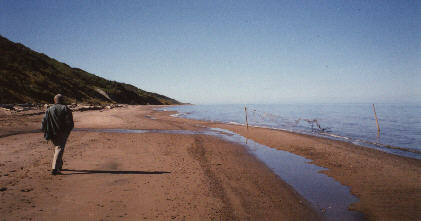| The central and southern parts
of the region are dominated by rolling plains. In the north-west, the land
rises to the Vetrenny Pojaz hills; the Pai-Tshoy hills are located in the
north-east. The Timanski mountains (up to 471 m high) run from north to
south. The north of the region belongs to the tundra climatic zone. The
central part of the region also has bush and forest tundra. In contrast,
the region's south is largely taiga. Pine forests dominate about half of
the region's surface.
In terms of climate, the Arkhangelsk
region belongs to the temperate continental zone. Only the region's north-east
has a sub-arctic climate with cool summers and long icy winters. The average
temperatures are -12° C in the west and -18° C in the east for January
and 16° C in the south and 8° C in the north for July. The average precipitation
equals 300-500 mm per year.
Of the Arkhangelsk region's
1,520,800 inhabitants, 92,1% are Russian (1996). Other ethnic groups include
Ukrainians (3.4%), Belorussians (1.3%), Komi (0.5%), Nenz (0.5%). 73.6%
of the population lives in urban areas.
The profile of the industry is dictated by lumberjacking
and timber processing. The most important branches of industry also include
the production of cellulose (35% of the entire Russian production), cardboard
(over 30%) and paper. The region's agriculture is dominated by cattle-breeding
(meat and milk production). In addition, pigs, goats, sheep, and, in the
north, reindeer are bred. Fur breeding and fishing are also of great important.
Due to the climatic conditions (relatively short vegetational periods)
and the nature of the ground (swampy and calcium-rich earth), grain is
hardly produced.
Michael Orawski
|

